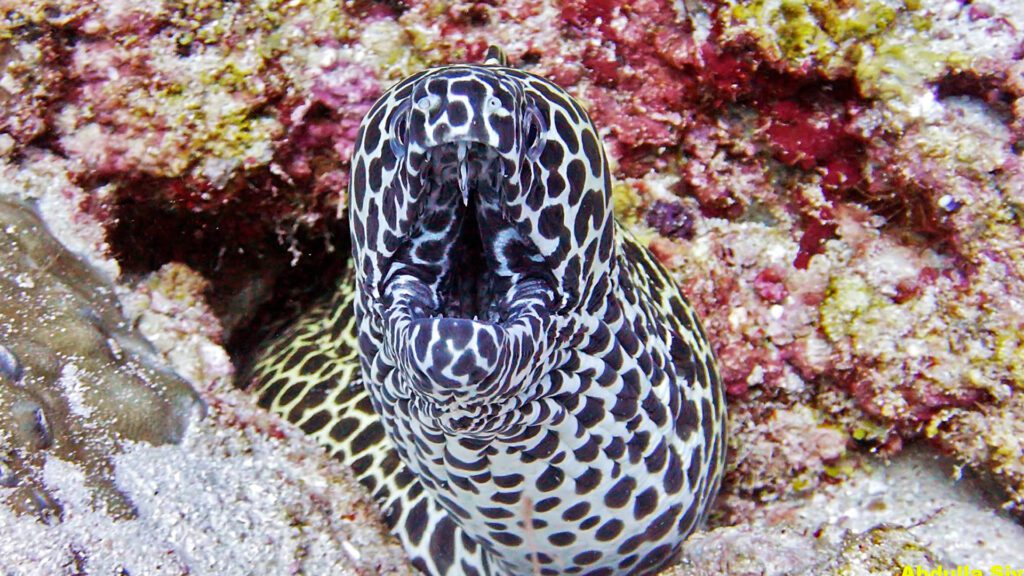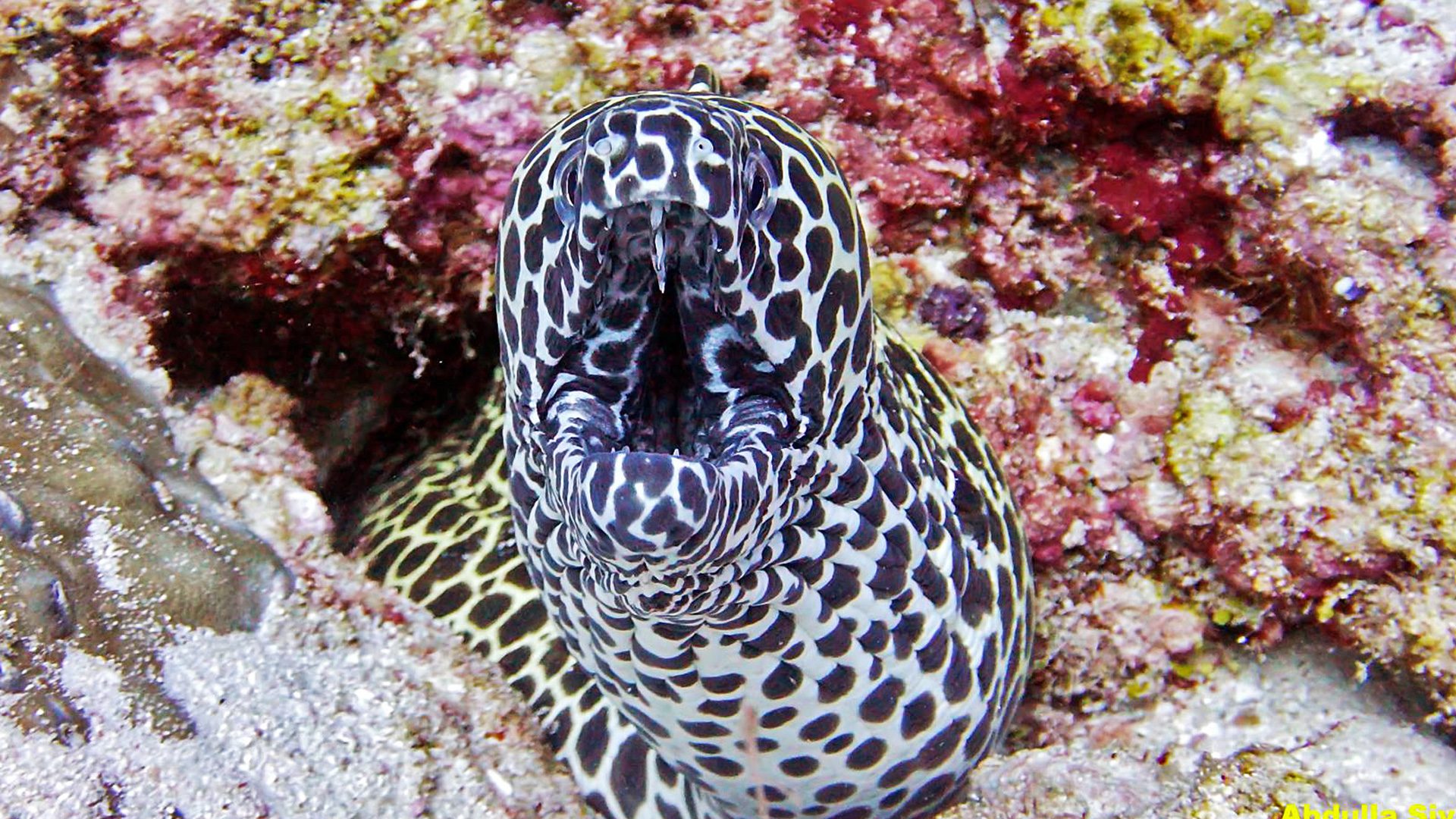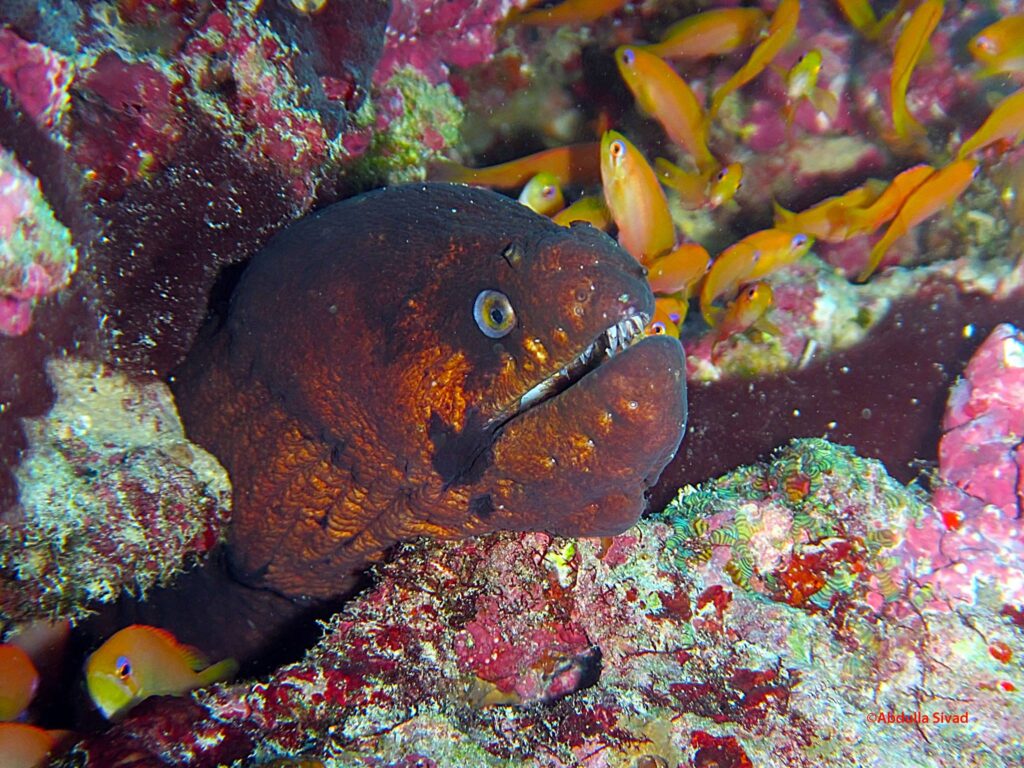
This is a series of articles that I’ve decided to publish under the title “Diver’s Len.”
The purpose of these articles is to provide readers with information regarding the various species of marine life that can be found in the ocean of the Maldives and that have been captured by photographers and videographers. In addition to the photographs and videos, we have provided a summary of general and scientific information about the species.
The photographer or diver has given permission to publish the photos and videos in these articles.
A skilled Maldivian underwater videographer, Abdulla Sivad, captured the video/photo featured in this article. This is about Honeycomb moray.
The species (Gymnothorax favagineus) is primarily white, featuring black blotches and white interspaces that create a honeycomb pattern. The size of the blotches varies between individuals, according to their overall size and habitat. Individuals that inhabit clear coral reefs typically exhibit proportionally less black coloration compared to those that reside in turbid waters.
This species has been observed at depths of 45 m, but it can also be found in waters as shallow as six meters. Widespread Indo-Pacific. One of the largest morays, up to about 2 m in length.
Moray eels are a large family of eels with at least 10 genera and an estimated 170 species worldwide, or over 200 species according to some authors. About 40 species have been recorded from the Maldives, but the majority are very secretive and rarely seen by divers, as they live inside the reef or in holes in sand.
Only a few species commonly inhabit reefs, typically revealing their heads from their holes during the day. Some species emerge at night to openly hunt over reefs and sand bottoms. Morays are carnivores and eat a mixture of whole invertebrates, such as shrimps, octopus, and fishes, including smaller eels.

